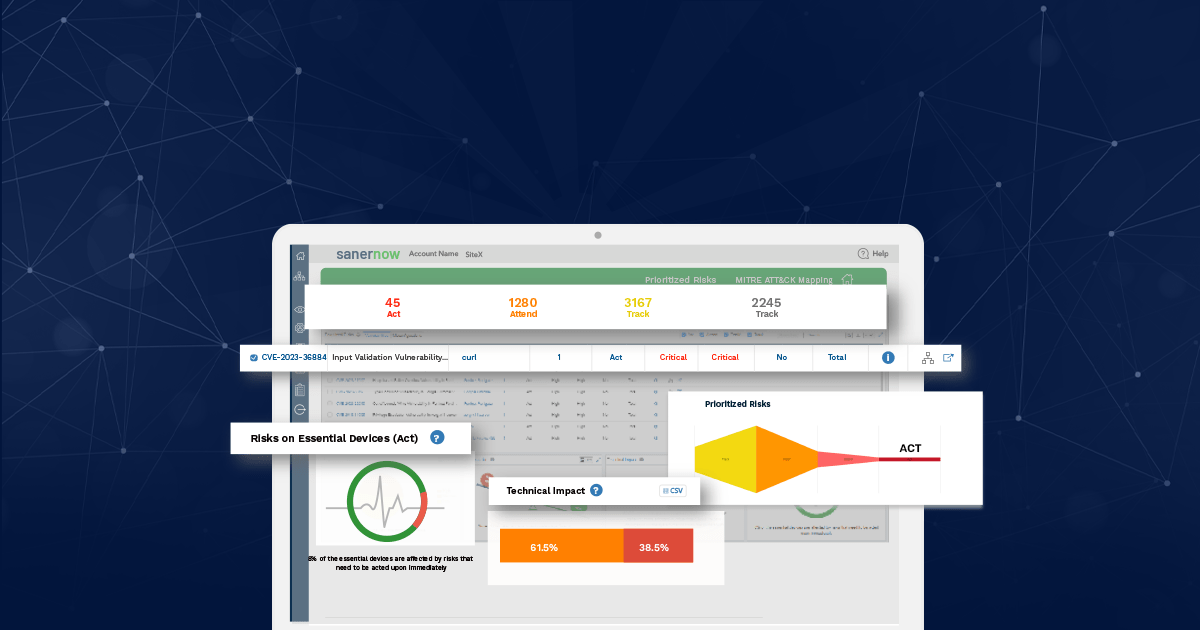In today’s rapidly evolving threat landscape, managing vulnerabilities has become a paramount concern for organizations. With an ever-increasing number of vulnerabilities and a constant influx of new threats, prioritizing remediation efforts is crucial. Traditional risk scoring methods, such as CVSS, fall short in addressing critical questions about vulnerability exploitation and the varying impact on different systems. This article introduces SanerNow Risk Prioritization, a ground-breaking solution designed to revolutionize vulnerability management.
The Challenge of Vulnerability Remediation:
When faced with millions of vulnerabilities, the challenge lies in determining where to focus remediation efforts. IT teams grapple with questions like: Which vulnerabilities are actively being exploited? Are any zero-days targeting our environment? Are all vulnerabilities equally critical? Does a vulnerability’s presence on a mission-critical system warrant prioritization?
SanerNow Risk Prioritization
SanerNow RP provides a clear and actionable approach to vulnerability prioritization. It categorizes vulnerabilities into four distinct tiers: Act, Attend, Track*, and Track based on CISA SSVC framework. This framework empowers stakeholders to differentiate between critical issues demanding immediate attention and those that can be addressed at a later stage.
Empowering Stakeholders:
The stakeholders, including IT security and IT operations teams, gain invaluable insights,
- Prioritization: Easily prioritize actions based on the designated categories.
- SLA Adherence: Establish and measure Service Level Agreements between IT security and IT operations teams.
- Cyber Health Metrics: Evaluate the organization’s cyber health based on mean-time to respond.
SanerNow RP in Action:
SanerNow RP employs a meticulous analysis based on four critical criteria: Exploitation likelihood, Automatability, Technical Impact, and Mission Prevalence, as defined in CISA SSVC. This analysis is complemented by proprietary vulnerability and threat intelligence, MITRE ATT&CK mapping, exploit prediction, and SecPod’s innovative risk categorization algorithm.
The outcome typically is,
- Act: 1% of vulnerabilities fall into this category, requiring immediate action.
- Attend: 8-10% necessitate attention before the regular patching cycle.
- Track*: 30% should be addressed within the established patching cycle.
- Track: 60% can be observed and monitored.
Conclusion:
SanerNow RP introduces a paradigm shift in vulnerability management, addressing the pressing challenges faced by IT teams. By offering a precise and actionable approach to prioritization, organizations can enhance their security posture and effectively mitigate threats. With SanerNow RP, vulnerabilities are no longer a daunting challenge but an opportunity for strategic and informed action.


